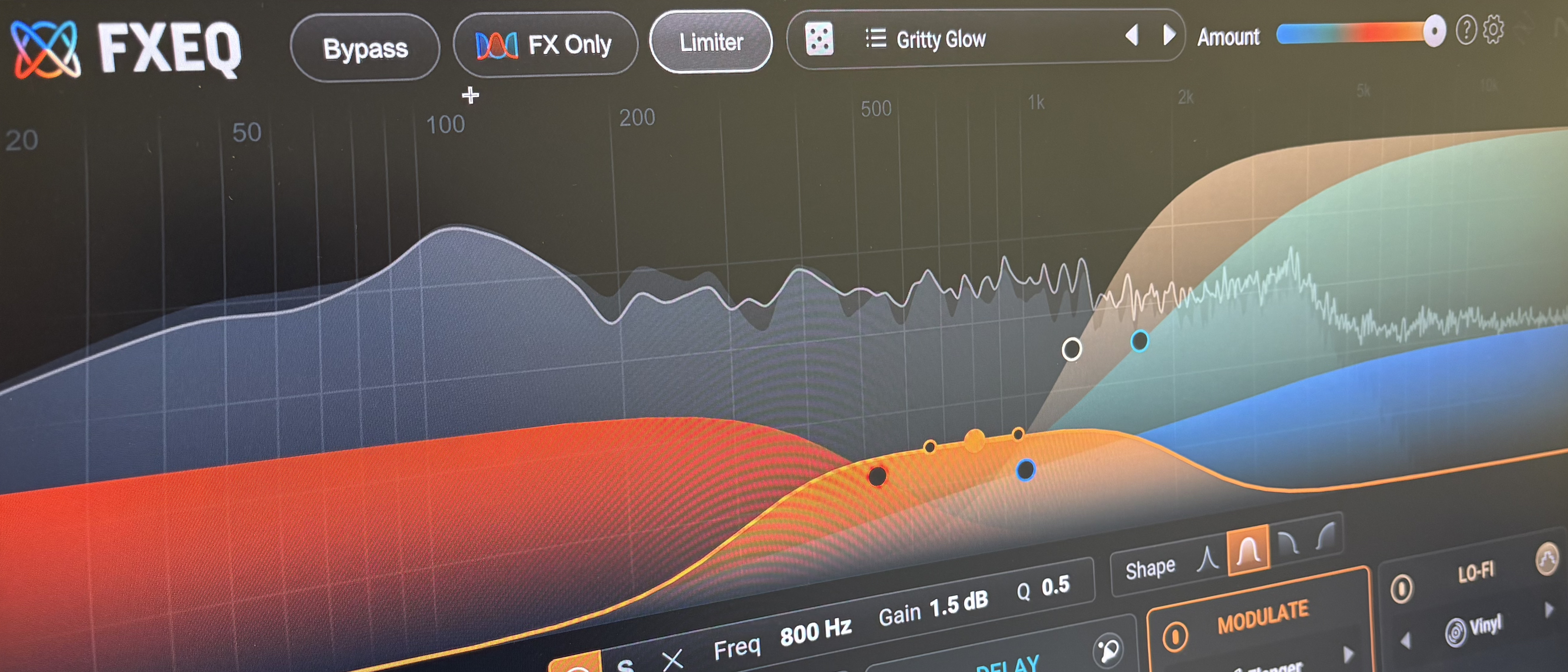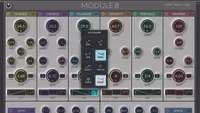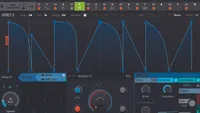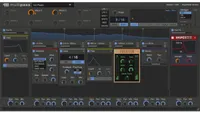MusicRadar Verdict
FXEQ is an instant and cheap mix fix for adding multiple effects per channel in probably the easiest and most familiar way. It increases workflow and creative options and, while not essential, could be the best 50 bucks you could spend on five plugins at once, and all in that familiar ‘EQ format’.
Pros
- +
Fantastic design.
- +
Fast, intuitive, creative, and precise mixing.
- +
Almost crazy cheap.
Cons
- -
No swapping effect order.
- -
Would be great to add other effects.
MusicRadar's got your back
What is it?
We’re all used to adjusting our EQ levels on a spectral display, pinpointing the exact frequency we wish to enhance or reduce, and doing this at whatever precision levels we require. How about using that process style for other effects? Maybe add a touch of reverb to your hi-end frequencies while saturating the low end? Or adding lo-fi grunge to your mids and dub delays to your bass?
That’s the route that iZotope has taken with FXEQ; it’s not exactly reinventing the effects wheel – other plugins do allow you to process multiple effects across different frequency ranges – but it is making the process more intuitive and easier than ever before.
iZotope’s FXEQ – part of the company’s Catalyst series – is a five-module multi that utilises a brilliant display to make it easy to see and hear what each of its effects is doing, how much they are doing, and this is the key, where each is doing it. And it sounds the bomb. You can go crazy with it if you like, but subtle and not-so-subtle use could make FXEQ a go-to plugin at every point in the production process.
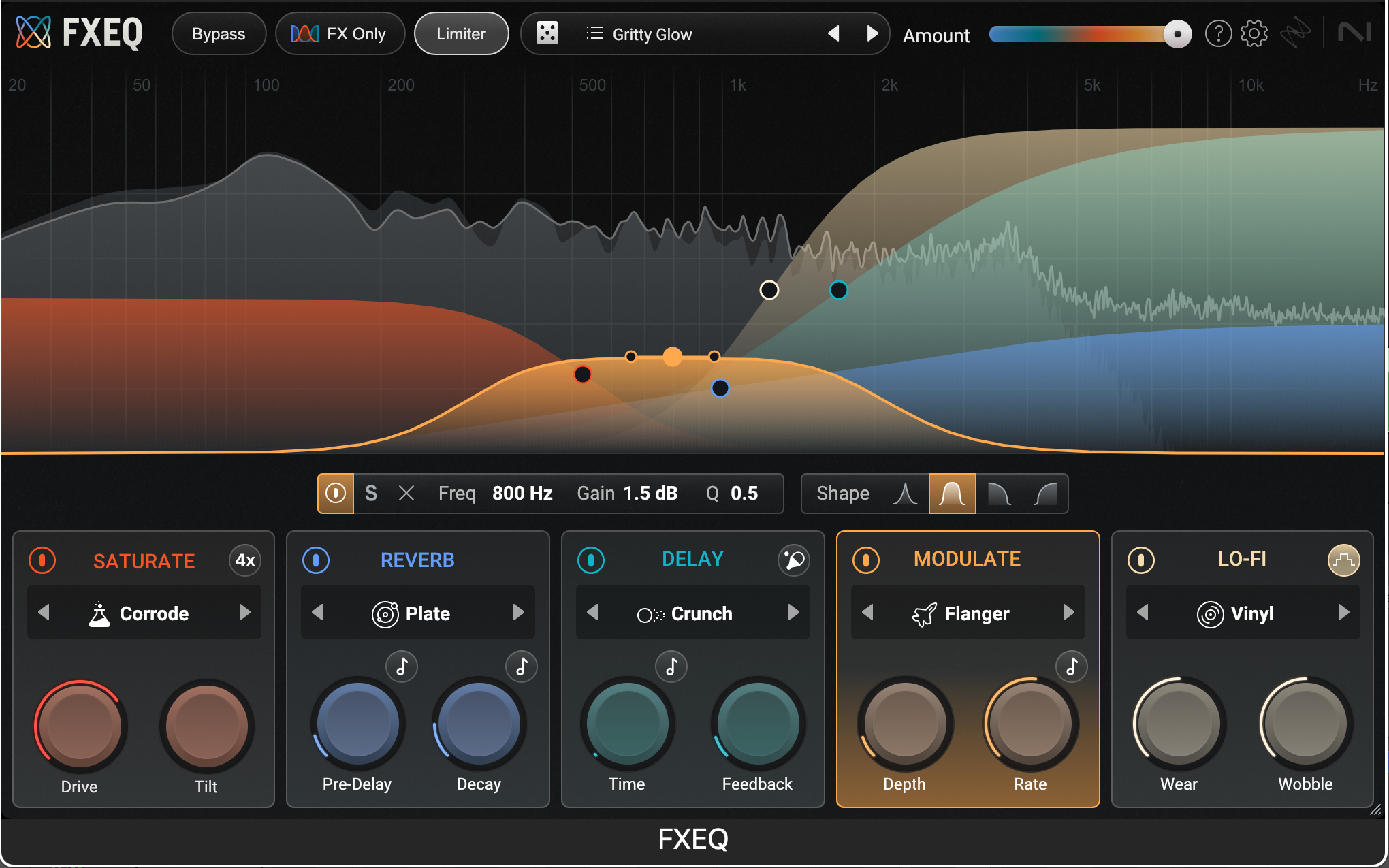
Performance
FXEQ’s five effect blocks are Saturation, Reverb, Delay, Modulation, and Lo-fi, each running in parallel through its own parametric EQ, and all shown on screen with a different colour per effect. Each of the five blocks has a central drop-down menu allowing you to access between three and eight effect modes, so you get chorus, doubler, flanger, and phaser modes within the Modulation block, for example.
The overall idea is to ‘paint’ the effects across the UI’s frequency spectrum with up to six nodes and four filter shapes per effect. And yes, it’s exactly like using a standard parametric EQ, only with five different effects, and you can just as easily increase the magnitude of the effect in any part of the range, and increase or decrease the width, as you would an EQ Q value, all with a simple mouse click and drag.
You only get a couple of controls in each effect section, but these carry out an effect’s main and most dramatic tasks. With its intuitive, colour-coordinated UI, you can clearly identify each effect, so it’s very easy to create, edit, and see your effect ‘painting’ as it comes together, and you’ll soon become as familiar with this UI and start to picture your mix or sound and as you do with your EQ.
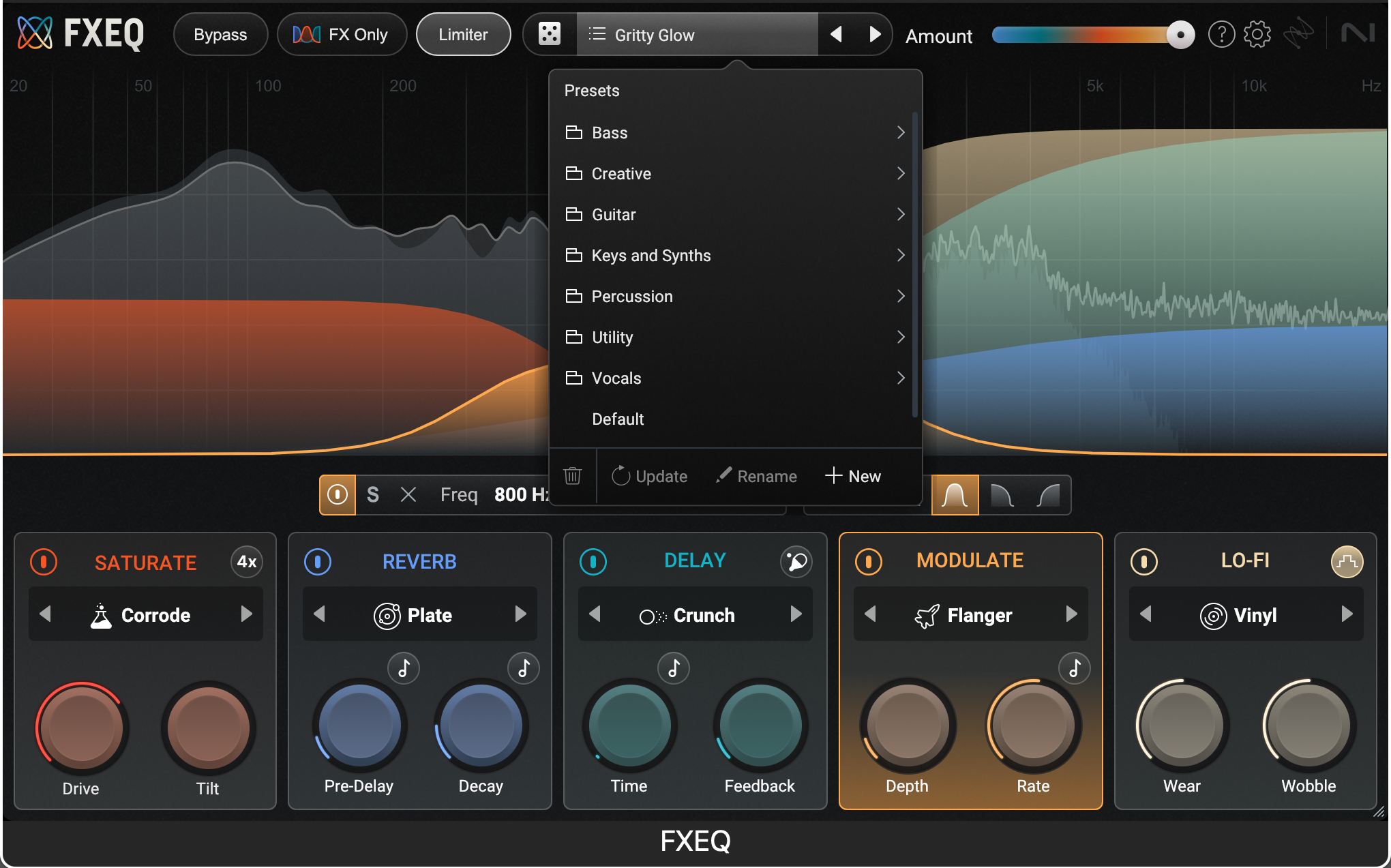
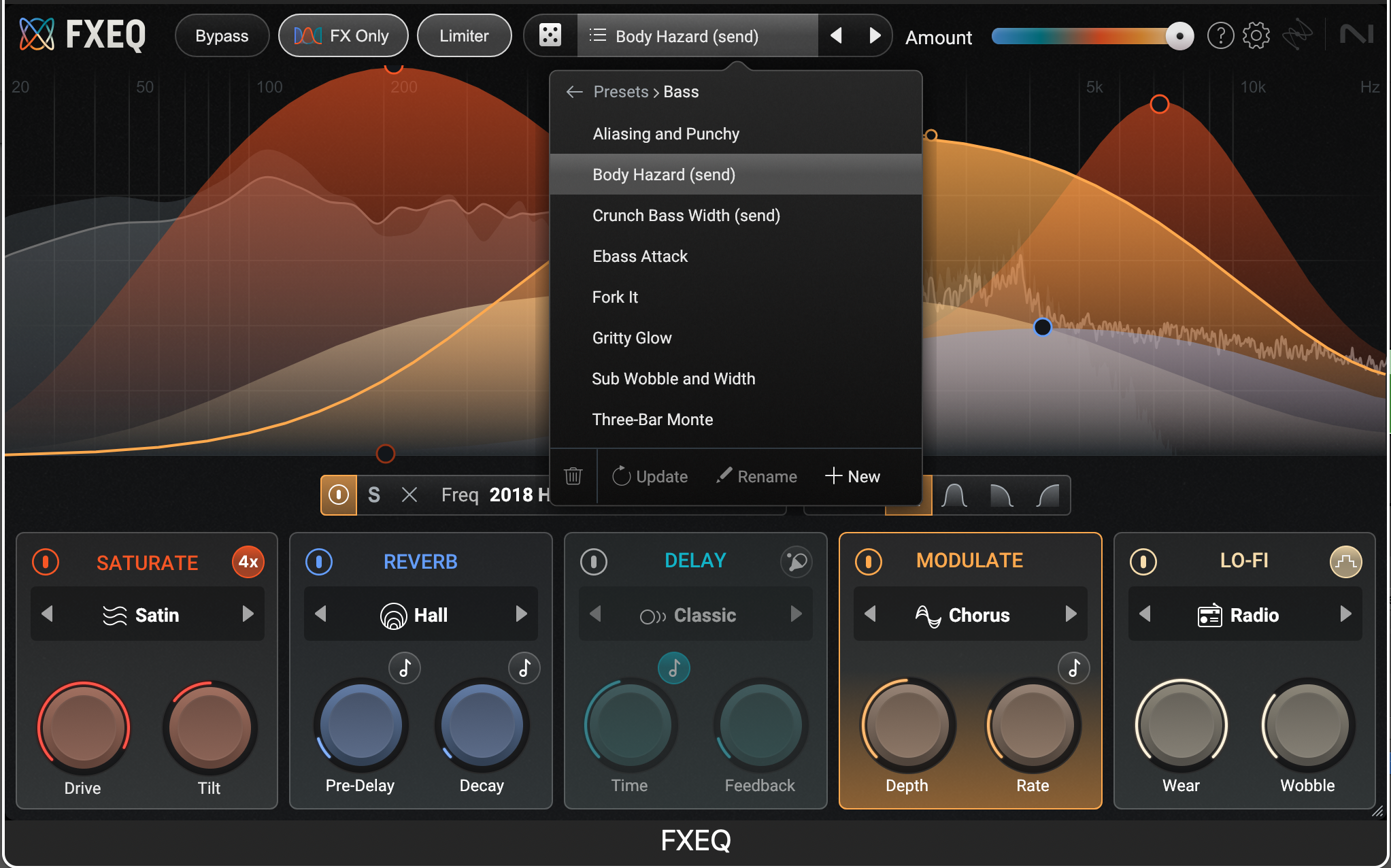
Where FXEQ obviously scores massively and quickly in a hands-on mix is the ability to add one effect to part of a sound’s frequency range and a second to another. You might want to, say, add both lo-fi grunge and saturation to a bass part’s lower mids to give it a completely new character, all while lifting some of its high mid character with a gentle reverb, and add some delays to the mids while you’re there.
Want all the hottest music and gear news, reviews, deals, features and more, direct to your inbox? Sign up here.
Sounds wise, a lot is going on, then, promoting FXEQ as a top design tool. Yes, use it subtly to add sparkly reverb shimmer to specific hi-end parts – great for strings and pads – or use it, as we did, on particularly bass heavy tracks where you can easily add gnarly character to distinguish one bassline from another. Used in full force, then, FXEQ adds another layer of sonic tweaking to your productions, letting you quickly and easily make those presets you used as guideline sounds into something that you can call your own.
Throw some automation into the mix and you can add more motion and emotion, and with five effects spinning around over different frequencies, the sky really is the limit. But while this is obviously great for creativity, it could also contribute to overcooking effects – you’ll probably end up considering combinations of effects that you might not have, simply because they are right there at your fingertips.
However, with its emphasis on the visuals and the clarity between effects, FXEQ also seemingly recognises this potential issue of overdoing effect processing – it’s easy to see where effects are stacking up, so even easier to do something about it. This could be particularly useful for avoiding low-end muddiness, for example, as you see exactly what is stacked up in that area.
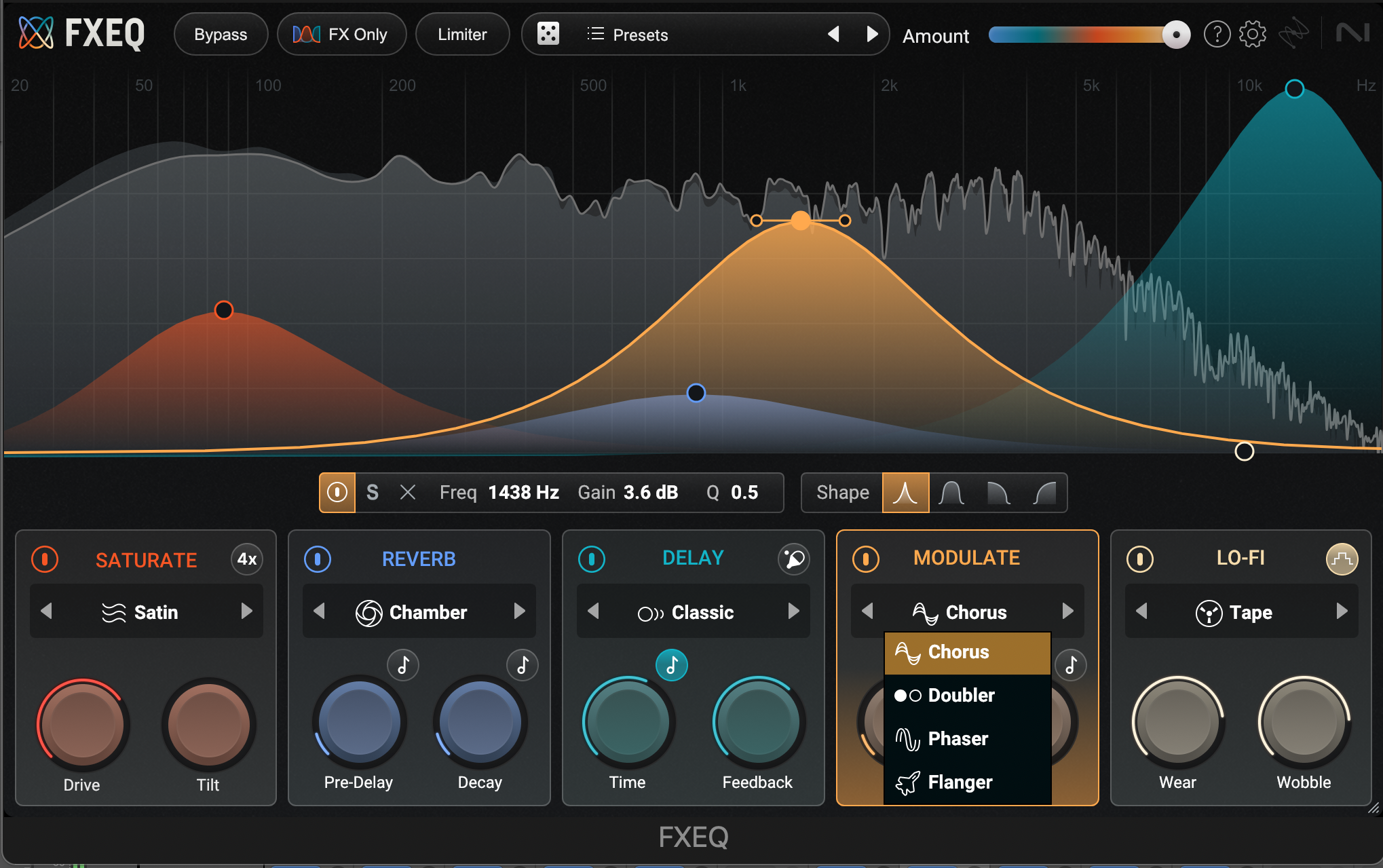
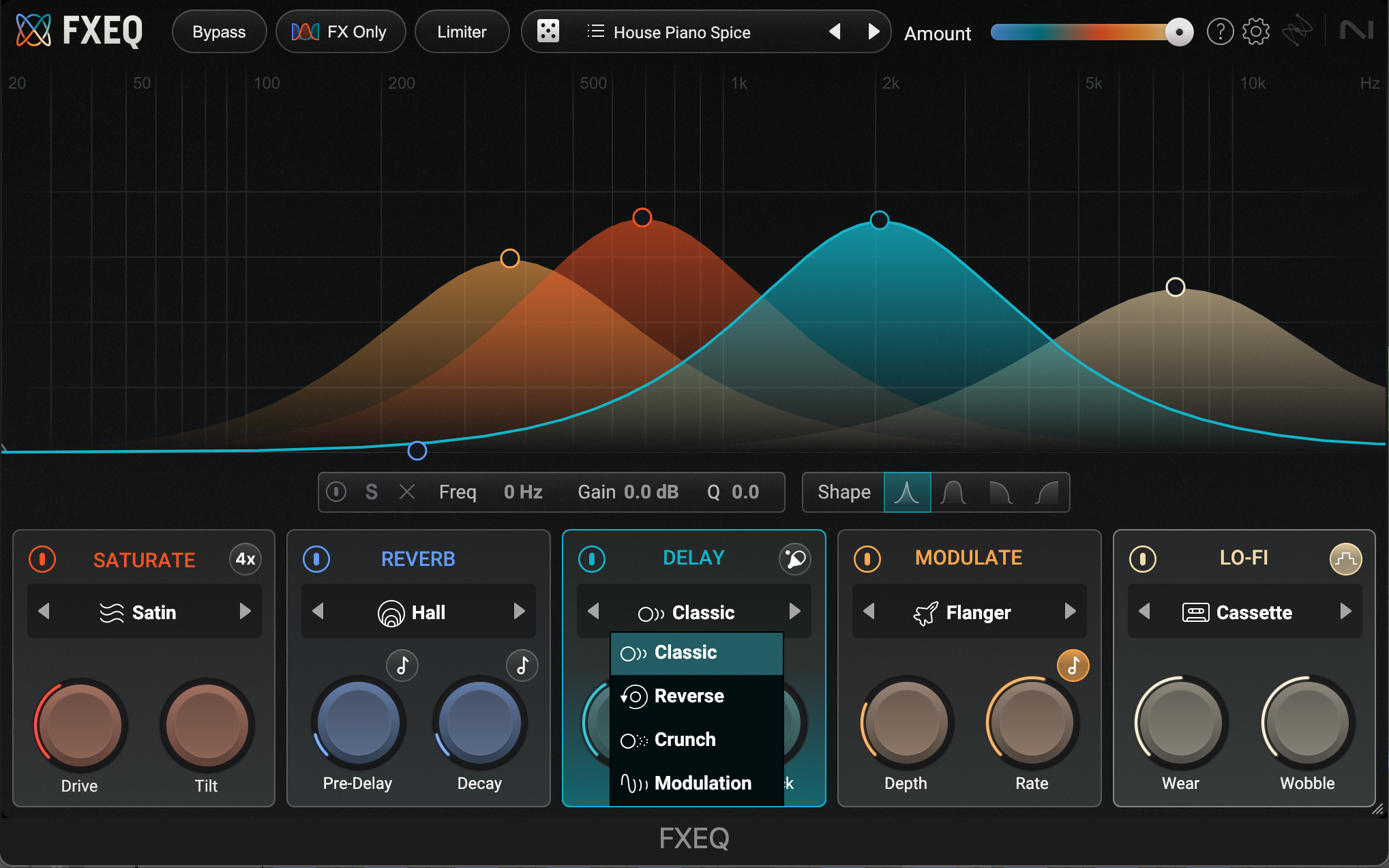
Verdict
FXEQ allows you to do away with stacks of insert or return effects (and potential high processor loads) by combining five types – and over 20 sub categories – within one plugin, and that is almost worth the 49 dollars alone. But its key selling point is just how it presents them to you as a kind of ‘effects EQ’ – so that’s where the name comes from – and so gets you over any learning curve hurdles fast. So it’s easy to use, gets speedy results, is cheap and sounds great. A 100% winner then, right?
Well, you can’t replace or re-order the effects (yet), which is a slight limitation compared to some of our multi-alternatives. But they lack FXEQ’s simplicity, and with less options to tweak per effect, the resulting streamlined workflow is a definite advantage and will lead to slicker, faster mixing.
With so many mix options available in as simple – and recognisable – a way as is possible, FXEQ will undoubtedly increase your creativity and speed up your workflow, from creating weird and wonderful tracks, to shaping entire mixes. You can probably achieve similar results by stacking up your stock plugins and EQ-ing each one, but with FXEQ you can do five jobs in one and all on the same display. And at less than 50 bucks, it’s hard not to recommend it.
You might think it’s an EQ to start with, but really FXEQ is an entire strip of effects in one. The bonus is that it uses that EQ look and platform to achieve great results, and very quickly, all with iZotope’s seal of quality and at an excellent price.
Hands-on demos
iZotope, Inc.
Alternatives
SSL’s Module8 has a similar stack of rack effects that you can re-order, but lacks specific frequency tweaking.
Read the full SSL Module8 review
More emphasis on modulation creation and out-there results, but this is still one of our favourite multi-effect plugs.
Read the full Devious Machines Infiltrator 2 review
If you thought this was a new way of processing, Kilohearts first introduced it nearly a decade ago with a plugin that splits your signal up by frequency and then allows you to drop effects in per band.
Read the full Kilohearts Multipass review
Specifications
Price | $49 |
Key features | Multi-effects plugin with five different effects: Saturation (8 modes), Reverb (3), Delay (4), Modulate (4) and Lo-fi (4), all adjustable over user-defined frequency ranges |
Operating systems | Mac macOS Ventura (13.7), Sonoma (14.7), and Sequoia (15.4), Windows 10 and 11 (24H2); compatible with Intel or Apple silicon M-series Macs (native & Rosetta) |
Plugin formats | AAX, AU, VST3, 64-bit only |
Supported hosts | Logic Pro 11, Pro Tools 2024-2025, Ableton Live 12, Cubase 14, Nuendo 14, Studio One 7, Reaper 7, FL Studio 25, Audition CC 2025, Premiere Pro CC 2025 |
Contact |
Andy has been writing about music production and technology for 30 years having started out on Music Technology magazine back in 1992. He has edited the magazines Future Music, Keyboard Review, MusicTech and Computer Music, which he helped launch back in 1998. He owns way too many synthesizers.
You must confirm your public display name before commenting
Please logout and then login again, you will then be prompted to enter your display name.
